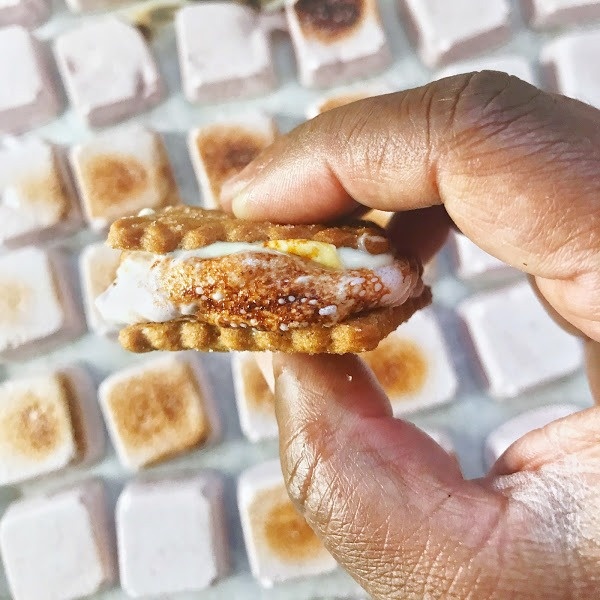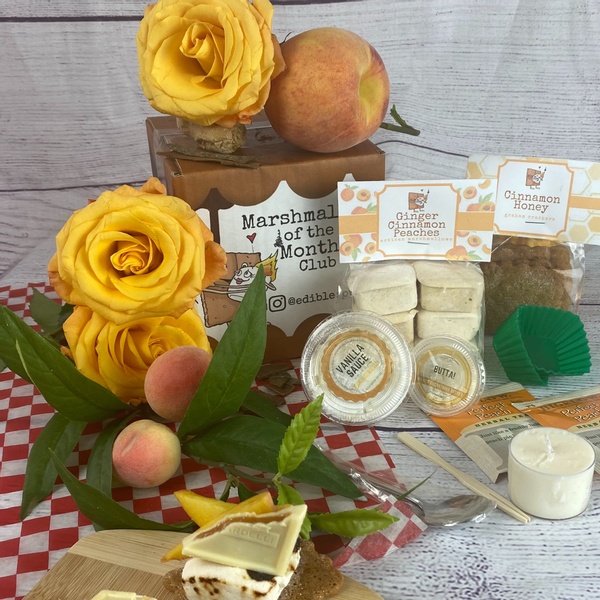The Sweet Science Behind Making Marshmallows
Updated by Taylor Tobin
Whether enjoyed as a topper for hot cocoa, a perfectly-roasted campfire treat, or a sweet indulgence all on their own, marshmallows are justifiably beloved by dessert fans of all ages. Bags of pre-made marshmallows are easy to find in grocery stores, but if you have a DIY spirit, you’ll be glad to know that marshmallows are relatively easy to make at home.
Which ingredients do you need to pick up—and what tools should you have on-hand—in order to make these squishy sweets? Luckily, we were able to get answers to all of our marshmallow-related questions from Chef S. Farrell, founder of the Marshmallow of the Month Club .

What ingredients and tools are necessary for making marshmallows?
To make** standard marshmallows **, Farrell tells us that only a few ingredients and a small collection of kitchen tools are required. The list includes:
- **Sugar: Surprise! **Sugar is the key ingredient when making marshmallows. Farrell says that you’ll typically use white granulated sugar for standard marshmallows, however, brown sugar can be used for a deeper, more caramel-like flavor.
- **Water: **Marshmallows start with a sugar syrup, which requires a combination of both sugar and water. You’ll also use water to bloom gelatin (more on that next).
- **Gelatin: **Gelatin gives the marshmallows their structure and soft, pillowy texture.
- **Corn syrup: **A basic syrup made with sugar and water can crystallize as it cools, which will negatively impact the texture of the marshmallows. Corn syrup helps to limit this process, working as a stabilizing agent for the marshmallow’s texture.
- **Vanilla extract: **Standard marshmallows have a slight vanilla flavor thanks to the inclusion of vanilla extract.
- **Candy thermometer: **When it comes to kitchen tools, a candy thermometer is the most essential for making great marshmallows. “The biggest mistake home cooks make is not calibrating their thermometers,” says Chef Farrell. “If you aren’t using a digital thermometer, which I highly recommend, you need to calibrate your candy thermometer. The best way to do this is to place it in a bowl of ice water and see if it reads 32°F or in boiling water to see if it reads 212°F.” The temperature of the cooked marshmallow syrup is important: it can go as low as 240°F, but no higher than 240°F.
- **Stand mixer or hand mixer: **However you choose to mix, these tools help to thoroughly integrate your marshmallow ingredients.

How can you make marshmallows at home?
The first step to making marshmallows is coating a sheet pan (Farrell recommends a 9x13” pan) with nonstick cooking spray. Next, start the “blooming” process for the gelatin by adding four ounces of ice-cold water to a microwaveable bowl and sprinkling two ounces of gelatin over the water then stirring to combine.
Add 12 ounces of cold water to a large pot, along with 2 1/2 cups of sugar and four ounces of corn syrup. Place a candy thermometer (or digital thermometer) into the pot and cook until syrup reaches 240°F.
Just before the sugar mixture comes to temperature—when the thermometer reads 235°F—place the bowl of gelatin in the microwave and zap it for 30 second increments until the gelatin melts into the water. “This helps to [prevent] gritty gelatin in your final product,” notes Farrell.
Combine the sugar syrup and the gelatin using a hand (or stand) mixer, whisking the marshmallow mix on high until it doubles or triples in size. (The mixing bowl should be warm to the touch.) Pour the marshmallow mix onto the sheet pan, using a spatula to scrape the extra mix off the sides of the bowl, and smooth with the spatula until it’s spread out evenly over the pan. Allow the marshmallows to set at room temperature for between two and four hours.
Finally, dust the marshmallows with powdered sugar and use a chef’s knife to slice them into cubes. Place the cubes in a large bowl with powdered sugar and toss until the sugar coats the marshmallow cubes on all sides.
Congratulations, your homemade marshmallows are ready to enjoy!

What’s the best way to store homemade marshmallows?
Homemade marshmallows should always be stored in an airtight container. If kept in a cool, dark place, they’ll stay good for up to a month at room temperature. If you need to prolong their freshness, the marshmallows can be placed inside a freezer container (or freezer bag) and stored for up to four months.















